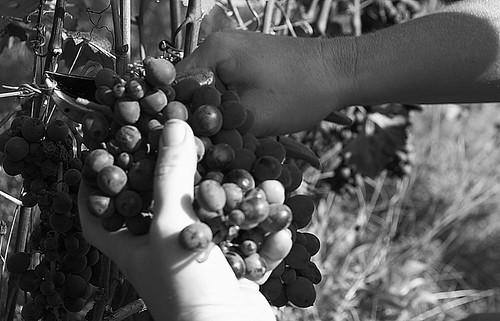In 2002, a young Norwegian couple, Frode Refstad and Eli Anne Langen, sold their apartment in Oslo and moved to Italy where they had bought a wine farm.
“Difficult to pay your expenses?”, I asked them. “Yes”, both of them said. “After having sold our apartment and paid the mortgage, we had very little money left, meaning that we had to have another great mortgage in order to buy the farm. We even needed economic support from our parents in order to realize our dream.” Another problem was speaking with the locals. Although Eli Anne had studied Italian at Språkskolen Ciao in Oslo, speaking Italian with someone who spoke in dialect was really difficult. Besides, almost nobody was able to speak English. Last but not least, the farm buildings were in bad repair, but the vines were thriving.
They are cultivating Barbiera, Nebbiolo and Freisa organically and they are producing three types of wine:
- Barbera d’Asti
- Vino Rosso Briccosoria
- Vino Rosso Nebbiolo
Organic cultivation makes the vines more autonomous than by using conventional cultivation, more resistant against diseases and more healthy. In order to fertilize the vines, they are using the remains after having pruned them and and after having harvested them, that is grapes not suitable for making wine, together with using organic fertilizers. Leaves and bunches of grapes infested with mildew, which thrives with increasing humidity, are treated with a mix of copper sulphate and sulphur, both of them approved for organic farming.
The grape harvest is done manually by Eli Anne and Frode with help from their friends from countries like Norway, Denmark and Australia.
The pruning is carried out in accordance with the lunar phases (maintaining ancient traditions) because the sap is located in the branches when the moon is waning, while it resides in the trunk and the roots when it’s waxing.
The vines were planted as far back as 1928, meaning a low quantity of grapes with excellent quality. Dead or dying vines are replaced by putting a fresh shoot from a healthy vine in the immediate vicinity into the ground, and leaving the rest to nature. After a period of 2-3 years, the branch is separated from its mother vine, having formed a root system in the meantime.
Winemaking of the grapes is carried out at the farm, manually if possible, by first crushing them, getting rid of stalks and leaves and letting them ferment in big steel containers. Letting the grapes in complete tranquillity, the sugars in the grapes are turned into alcohol by means of fermentation, while the grape skins give the resulting wine aroma and taste. Fermentation of the grapes require that they stay within a certain temperature range, meaning that temperature control is mandatory. Cleaning is also important, but not too much in order to avoid finishing off the good bacteria which carry out the fermentation.
The fermentation lasts 20-25 days depending on the harvest, the weather and how mature the grapes were when being harvested. Tests of the must are performed regularly in order to monitor the transformation from sugar to alcohol together with other properties. After having separated the wine from the marc (grape skins and various solids remaining after the fermentation), a specialist analyses the product and, after having certified its quality, the wine is poured into wooden barrels for a slow and valuable maturation. Then, the marc is transported to a distillery for production of grappa.
About 70% of the wines from Tenuta il Sogno is sold in Norway, while the rest is sold at the farm.

